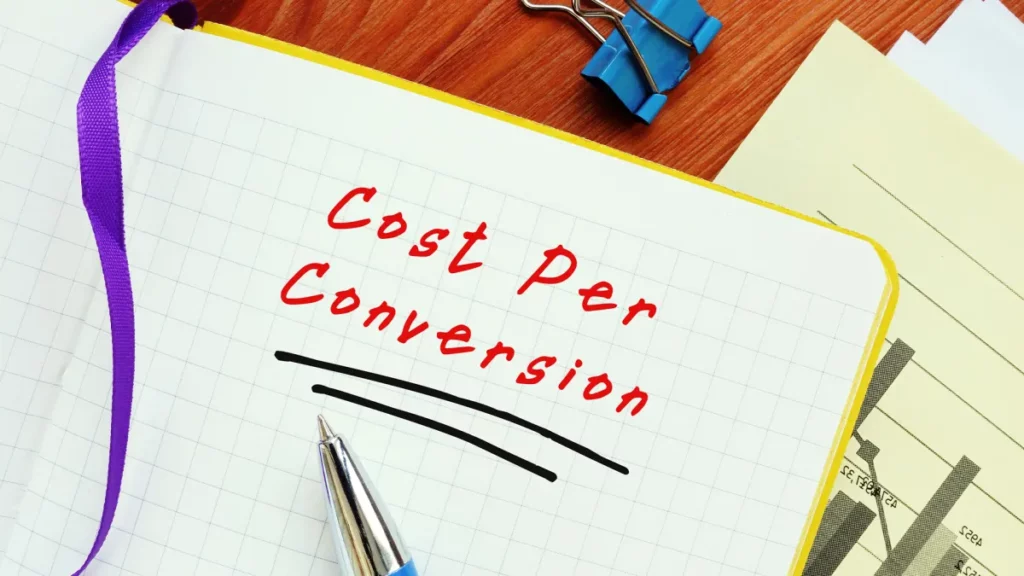
Cost per Click vs Cost per Conversion: A Comparative Analysis
In today’s digital age, understanding the concepts of Cost per Click (CPC) and Cost per Conversion (CPCV) are critical in maximizing the return on your advertising investments.
While both can be essential parts of a comprehensive marketing strategy, understanding the differences between them, as well as their potential advantages and challenges, can make a significant difference in your campaigns’ success.
Understanding Cost per Click (CPC)
Delving deeper into the realm of digital advertising, let’s decode the mechanics of Cost per Click, or CPC as it’s popularly known. The essence of CPC lies in its very name: you, the advertiser, pay a certain fee every time a user clicks on your ad. This model finds its home in paid search campaigns, wherein your ads pop up in the search engine results, vying for user attention.
But how is this cost determined? It’s through an interesting process called the bidding system. Think of it as an auction, where you state the highest price, you’re willing to shell out for each click. Your bid competes against others, influencing where and when your ad is displayed.
Now, it’s vital to remember that the main objective of this strategy is traffic generation. The goal is not just about having users view your ads, but to intrigue them enough to click on them, leading them straight to your website.
This way, you can attract a broader audience, increase your site visits, and potentially gain more customers. CPC, thus, acts as your digital beacon, guiding users in the vast world of the internet, right to your online doorstep.
The Intricacies of Cost per Conversion (CPCV)
Cost per Conversion, frequently referred to as Cost per Acquisition (CPA), is an entirely different ballgame in the digital advertising field. It’s not just about drawing visitors to your site, but more about what they do once they arrive.
Whether they purchase a product, sign up for a newsletter, or fill out a form – every action is a potential conversion. In the CPCV model, the payment is tied directly to these actions. The conversion, hence, could be any desired action that aligns with your marketing goals.
How to Measure Success
Unlike its cousin, CPC, where the focus is on the quantity and getting users to click on your ad, CPCV is all about quality. It emphasizes the significance of the user’s engagement level after the click. You don’t pay for a click; you pay when that click translates into a conversion.
So, the narrative changes from “how many people are visiting?” to “how many people are engaging?” The spotlight here is on measuring the success in terms of tangible actions taken by the user, thus providing a clear picture of how effectively your ads are driving desired results.
CPCV, hence, goes beyond the click to explore the visitor’s journey after they land on your site, making it a potent strategy for businesses aiming to boost their conversions. Just remember, in this model, every click counts, but what truly matters is what the user does after that click.
Benefits of Implementing Cost per Click
Diving headfirst into the benefits of the CPC strategy, we find that it offers an uncomplicated way of directing traffic to your website. Its simplicity is one of its strong suits – with CPC, you know exactly what you’re getting for your investment: eyeballs on your page.
This model provides easily interpretable data, allowing you to track performance and adjust your campaign in real-time, keeping you in the driver’s seat.
Increased Visibility
When it comes to budgeting, CPC gets a thumbs up. You can set the cost per click according to your financial resources, making it an accessible option for both fledgling start-ups and established corporations.
Not to forget, it is a powerful tool for enhancing brand visibility and awareness. The more users click on your ads, the higher your brand’s exposure, acting as a digital billboard for your business. So, if you’re looking to make some noise in the digital sphere, then CPC could be your go-to strategy.

Advantages of Cost per Conversion Strategy
Unveiling the perks of the Cost per Conversion strategy, we see its laser-like focus on the ultimate aim: transforming mere visitors into committed customers. This approach demystifies the calculation of return on investment (ROI), thanks to its inherent design where costs are intertwined with actual, measurable outcomes. The true standout feature of this strategy is its capacity to exhibit tangible victories through the actions executed by users that directly add value to your business.
This system, commonly known as CPCV, zeroes in on quality rather than quantity, giving a detailed account of how impactful your ad campaign is. It takes the guesswork out of the equation, providing exact data on how many visitors have taken the desired action after clicking on your ad. It underscores the necessity for the visitor’s journey post-click to culminate into a conversion, thereby enabling a more focused and result-oriented advertising approach.
Visitor Interaction
Moreover, the CPCV model encourages advertisers to create a seamless, engaging user experience that can lead to the desired action, whether it’s a purchase, a sign-up, or any other goal. It propels marketers to not just attract visitors but to retain them and convert their interest into a meaningful interaction.
However, while it provides a distinct measure of your ad campaign’s effectiveness, the CPCV strategy also brings in the need for constant optimization and careful monitoring to ensure that every dollar spent is genuinely driving value. But, when wielded correctly, it can turn out to be a powerful tool to boost your conversions, making every click count and contributing directly to your business’s bottom line.
Challenges Associated with CPC and CPCV
While the advantages of both CPC and CPCV are substantial, it’s essential to also consider the potential hurdles that come with these strategies. With CPC, one significant challenge is the possibility of attracting irrelevant traffic.
In other words, not everyone who clicks on your ad may be genuinely interested in your offerings. This scenario can lead to an inflated budget spend without seeing a proportionate increase in your return on investment. A more disheartening issue is click fraud, where your ads receive false or malicious clicks, depleting your budget without any real prospect of return.
Overcoming the Challenges
Conversely, the challenges with the CPCV model are slightly more complex. The emphasis on conversions means it requires more careful management and optimization. If not executed correctly, it could result in higher costs, without necessarily guaranteeing an increase in conversions.
The process of continuously monitoring and fine-tuning campaigns to ensure effectiveness can be time-consuming and may require a level of expertise that not all businesses possess. Moreover, conversions are not always instant. They often need nurturing and follow-ups, making the path to profitability potentially longer and more winding.
In summary, while both CPC and CPCV provide valuable approaches to digital advertising, they also bring their own set of challenges that must be carefully navigated to maximize your ad spend effectively.
CPC or CPCV: Which One to Choose?
Deciphering whether CPC or CPCV fits your advertising objectives better is akin to figuring out the perfect recipe for your marketing success. Are you aiming to reel in massive traffic, enhancing your brand visibility on the digital stage?
Then the straightforward, click-based model of CPC might just be your ideal match. It offers you a clear sight of what you are paying for – clicks that ferry users to your site, enhancing your brand’s digital footprint.
Which Is The Right Choice?
On the other side of the coin, if your endgame is to spur meaningful user actions that align with your marketing goals, then you may want to take the CPCV route. This model doesn’t merely bring users to your doorstep; it invites them in and engages them, thereby potentially turning mere visits into valuable conversions.
It’s crucial to understand that this isn’t a black and white choice. You don’t have to strictly stick to one or the other. Many prosperous businesses deftly blend both strategies, altering the mix as per their changing campaign objectives. It’s more of an art than a science, mastering the symphony of clicks and conversions to strike the right chord with your audience.
It all boils down to recognizing what you aim to achieve with your campaign, and then tailoring your approach accordingly. So, whether it’s CPC, CPCV, or a harmonious blend of both, the choice is yours to make.
Conclusion: Finding the Right Balance
The quest for success in the digital advertising landscape comes down to finding the right equilibrium between Cost per Click (CPC) and Cost per Conversion (CPCV). Each strategy holds its distinct benefits and challenges, and understanding these is a game-changer when designing an effective advertising campaign tailored to your specific needs.
Whether you play your hand with CPC, favor the CPCV approach, or skillfully blend the two, the true key to victory is striking the right balance. This balance allows you to hit your business objectives while optimizing the return on your advertising investments.
The Choice is Yours!
It’s crucial to remember that there’s no universal solution in the digital advertising sphere. Therefore, investing time and effort to comprehend and implement these strategies can significantly amplify the effectiveness of your campaign.
By making informed decisions, you can navigate the waters of digital advertising with confidence, tailoring your approach to best suit your business goals and audience behavior.
Whether your aim is to cast a wide net with CPC or hone in on specific actions with CPCV, the power to mold your advertising journey is in your hands. Embrace the balance, master the strategies, and watch your business growth skyrocket.
Need help becoming more relevant in the eyes of search engines and online customers?
The quality of our SEO services is unmatched, as proven by the numerous local service businesses and contractors we have as clients, all of whom are consistently appearing on the first page of Google nationwide

